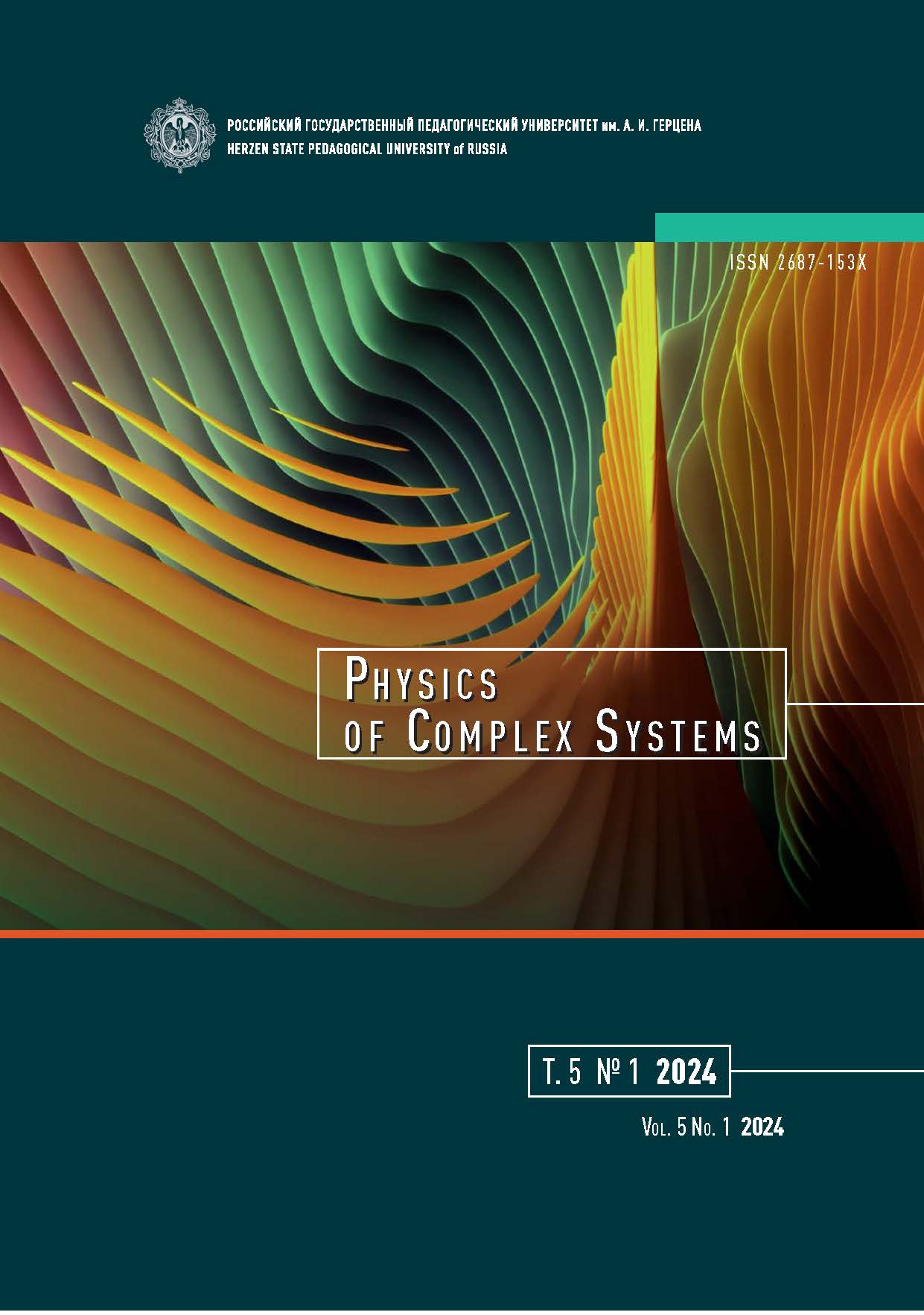The behavior of the optical characteristics of modified arsenic triselenide films
DOI:
https://doi.org/10.33910/2687-153X-2024-5-1-39-43Keywords:
chalcogenide glasses, modifying impurity, absorption coefficient, Urbach energy, band gapAbstract
The influence of the level of modifier content on the behavior of the optical characteristics of thermally deposited films of arsenic triselenide chalcogenide glasses is investigated. A parallel shift of the absorption edge towards short wavelengths and a decrease in the slope of the exponential “tail” are observed. The increase in the slope of the Urbach energy dependence with an increasing modification level can be explained both by an increase in the concentration of metal-metal bonds, due to a deviation from stoichiometry, and by a transition through the value of the coordination number corresponding to the point of the topological phase transition. A simultaneous decrease in the band gap apparently indicates an increase in the defectiveness of the structure. In addition, it may indicate the presence of a higher concentration of trap states near the Fermi level, leading to a corresponding smearing in the “tails” of conductivity in chalcogenide glassy semiconductors (CGS).
References
Avanesyan, V. T., Provotorov, P. S., Krbal, M., Kolobov, A. V. (2022) Optical characteristics of modified As30S70 thin films. Physics of Complex Systems, 3 (3), 137–143. https://www.doi.org/10.33910/2687-153X-2022-3-3-137-143 (In English)
Avanesyan, V. T., Provotorov, P. S., Stozharov, V. M. et al. (2021) Spectroscopy of zinc oxide thin films near the fundamental absorption edge. Optics and Spectroscopy, 129 (11), 1196–1199. https://doi.org/10.1134/S0030400X21090046 (In English)
Provotorov, P. S., Avanesyan, V. T., Krbal, M., Kolobov, A. V. (2021) Effect of doping of molybdenum on the optical properties of glasses of the As–S system. Physics of Complex Systems, 2 (3), 115–121. https://www.doi.org/10.33910/2687-153X-2021-2-3-115-121 (In English)
Sobolev, V. V. (2012) Opticheskie svojstva i elektronnaya struktura nemetallov: vvedenie v teoriyu [Optical properties and electronic structure of nonmetals: Introduction to theory]. Izhevsk: Izhevsk Institute of Computer Research Publ., 584 p. (In Russian)
Tauc, J. (1968) Opticheskie svojstva poluprovodnikov v vidimoj i ul’trafioletovoj oblastyakh spektra [Optical properties of semiconductors in the visible and ultraviolet regions of the spectrum]. Uspekhi fizicheskikh nauk — Advances in Physical Sciences, 9 (3), 501–534. https://doi.org/10.3367/UFNr.0094.196803e.0501 (In Russian)
Vainshtein, I. A., Zatsepin, A. F., Kortov, V. S., Shchapova, Yu. V. (2000) The Urbach rule for the PbO-SiO2 glasses. Physics of the Solid State, 42 (2), 230–235. https://doi.org/10.1134/1.1131151 (In English)
Weinstein, I. A., Zatsepin, A. F., Kortov, V. S. (2001) Effects of structural disorder and Urbach’s rule in binary lead silicate glasses. Journal of Non-Crystalline Solids, 279 (1), 77–87. https://doi.org/10.1016/S0022-3093(00)00396-3 (In English)
Downloads
Published
Issue
Section
License
Copyright (c) 2024 Vachagan T. Avanesyan

This work is licensed under a Creative Commons Attribution-NonCommercial 4.0 International License.
The work is provided under the terms of the Public Offer and of Creative Commons public license Creative Commons Attribution 4.0 International (CC BY 4.0).
This license permits an unlimited number of users to copy and redistribute the material in any medium or format, and to remix, transform, and build upon the material for any purpose, including commercial use.
This license retains copyright for the authors but allows others to freely distribute, use, and adapt the work, on the mandatory condition that appropriate credit is given. Users must provide a correct link to the original publication in our journal, cite the authors' names, and indicate if any changes were made.
Copyright remains with the authors. The CC BY 4.0 license does not transfer rights to third parties but rather grants users prior permission for use, provided the attribution condition is met. Any use of the work will be governed by the terms of this license.







